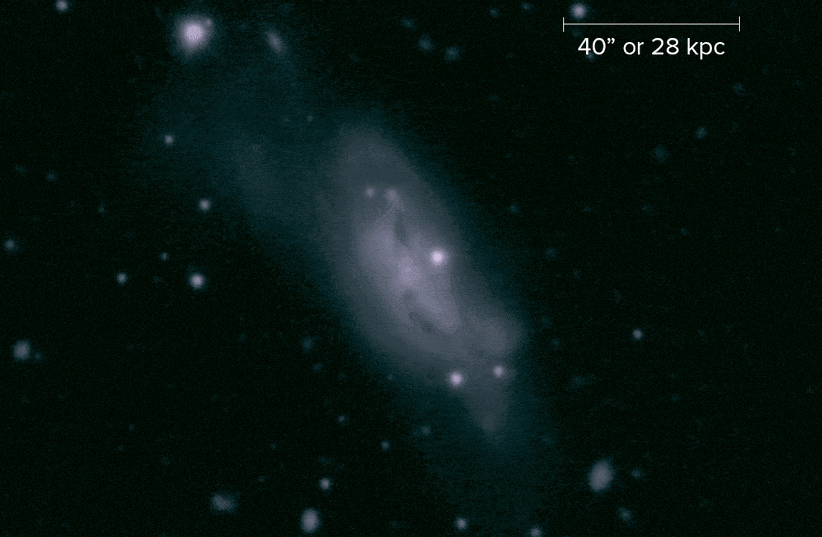Scientists discover pair of black holes sharing a galaxy-merger meal

The two black holes are extraordinarily close together, and are jointly feasting on the matter generated as a byproduct of the merging galaxies.
Scientists have found a pair of supermassive black holes that appear to be growing simultaneously alongside one another at the center of a currently-consolidating galaxy.
The discovery was made using data from the Hubble Space Telescope and the Atacama Large Millimeter/submillimeter Array (ALMA) and the findings were published in early January 2023 in the peer-reviewed journal The Astrophysical Journal Letters.
Scientists found the supermassive black holes while using ALMA to study the two converging galaxies around them.
The two black holes are extraordinarily close together and are jointly feasting on the matter generated as a byproduct of the merging galaxies. They are only 750 lightyears away from each other - in terms of galaxies and black holes, that's an intimate meal.
“Simulations suggested that most of the population of black hole binaries in nearby galaxies would be inactive because they are more common, not two growing black holes like we found,” said Michael Koss, a senior research scientist at Eureka Scientific and the lead author of the new research.
What impact does this have on us?
Researchers have largely been able to study only the earliest stages of galactic mergers. The new data from this study could have a significant impact on our understanding of our own Milky Way Galaxy and its eventual merger with nearby Andromeda.
“The Milky Way-Andromeda collision is in its very early stages and is predicted to occur in about 4.5 billion years," explained Koss. "What we’ve just studied is a source in the very final stage of collision, so what we’re seeing presages that merger and also gives us insight into the connection between black holes merging and growing and eventually producing gravitational waves.”
“ALMA is unique in that it can see through large columns of gas and dust and achieve a very high spatial resolution to see things very close together," Koss added.
"Our study has identified one of the closest pairs of black holes in a galaxy merger, and because we know that galaxy mergers are much more common in the distant Universe, these black hole binaries, too, may be much more common than previously thought.”
Jerusalem Post Store
`; document.getElementById("linkPremium").innerHTML = cont; var divWithLink = document.getElementById("premium-link"); if (divWithLink !== null && divWithLink !== 'undefined') { divWithLink.style.border = "solid 1px #cb0f3e"; divWithLink.style.textAlign = "center"; divWithLink.style.marginBottom = "15px"; divWithLink.style.marginTop = "15px"; divWithLink.style.width = "100%"; divWithLink.style.backgroundColor = "#122952"; divWithLink.style.color = "#ffffff"; divWithLink.style.lineHeight = "1.5"; } } (function (v, i) { });

